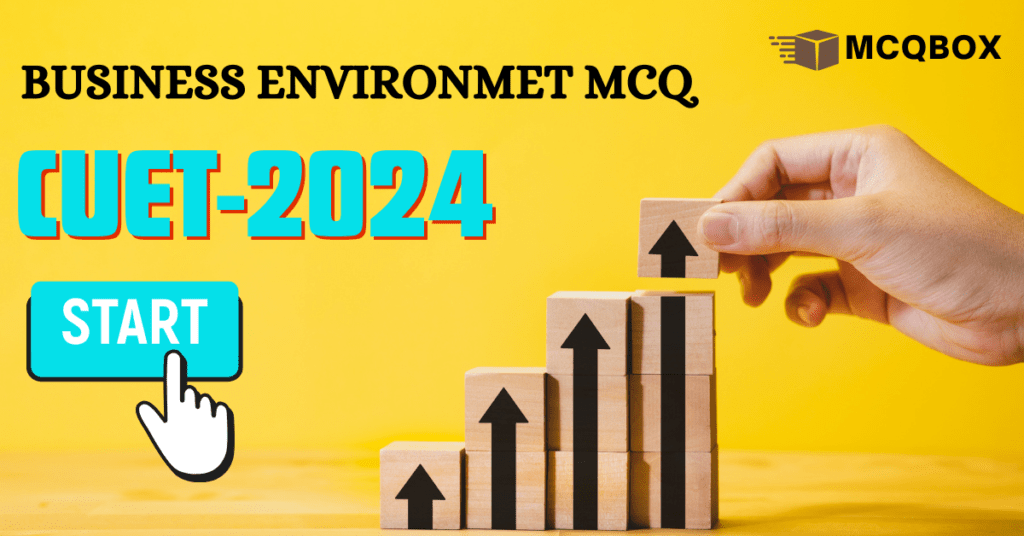Exploring the CUET Business Environment MCQ Test
The business environment encompasses the external and internal factors that influence a company’s operations, performance, and decision-making. It comprises a myriad of elements, each playing a crucial role in shaping the landscape within which businesses operate.
Table of Contents
Significance of Understanding Business Environment
Navigating the complexities of the business environment is a strategic imperative for organizations. It provides insights into potential opportunities, challenges, and areas of growth. Companies that grasp the nuances of their business environment are better equipped to formulate effective strategies and make informed decisions.
Components of Business Environment
Economic Environment
In the economic realm, businesses are deeply affected by macro and microeconomic factors. Bold initiatives by governments or subtle market shifts can significantly impact business operations. Understanding these dynamics is vital for anticipating changes and adapting strategies accordingly.
Social and Cultural Environment
The social and cultural environment shapes consumer behavior and influences business practices. Companies must be attuned to cultural nuances to tailor their products and services effectively. Failure to do so can lead to misalignment with market expectations.
Political and Legal Environment
Bold regulatory frameworks and government policies create the political and legal environment. Staying abreast of these factors is imperative for compliance and risk management. Changes in legislation can either open new avenues or pose significant challenges for businesses.
Technological Environment
In today’s digital age, the technological environment is a dynamic force driving innovation and change. Businesses that embrace technological advancements gain a competitive edge. Failing to adapt to technological shifts can render companies obsolete.
Types of Business Environment
Internal Business Environment
The internal environment comprises factors within the company’s control, such as company culture and structure. Fostering a positive internal environment contributes to employee satisfaction and productivity.
External Business Environment
External factors, including the competitive landscape and market trends, present challenges and opportunities. Businesses must monitor these elements to stay agile in a dynamic market.
Dynamic Nature of Business Environment
Constant Change and Adaptation
The business environment is characterized by constant change. Embracing this dynamism, businesses must adopt strategies for adapting to changes swiftly. Agility becomes a key competency for success.
Impact on Business Planning
The dynamic nature of the business environment has a profound impact on business planning. Long-term strategies need to incorporate flexibility to navigate unforeseen challenges effectively.
Business Environment Analysis Tools
Understanding the business environment requires robust analytical tools, and two key methodologies stand out:
SWOT Analysis
Bold: SWOT analysis evaluates a company’s Strengths, Weaknesses, Opportunities, and Threats. This tool provides a holistic view, aiding businesses in making informed decisions.
PESTEL Analysis
Bold: Examining Political, Economic, Social, Technological, Environmental, and Legal factors through a PESTEL analysis helps businesses anticipate external influences. It serves as a comprehensive framework for strategic planning.
Global Business Environment
International Business Factors
As businesses expand globally, understanding international business factors becomes paramount. Cultural differences, regulatory landscapes, and market nuances play a pivotal role in global success.
Cross-Cultural Challenges
Cross-cultural challenges can impact communication, negotiation, and business relationships. Organizations must be adept at navigating diverse cultures for sustainable global operations.

Take the CUET Business Environment MCQ test to assess your understanding. Dive into multiple-choice questions on various business environment topics. Challenge yourself now!”
